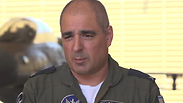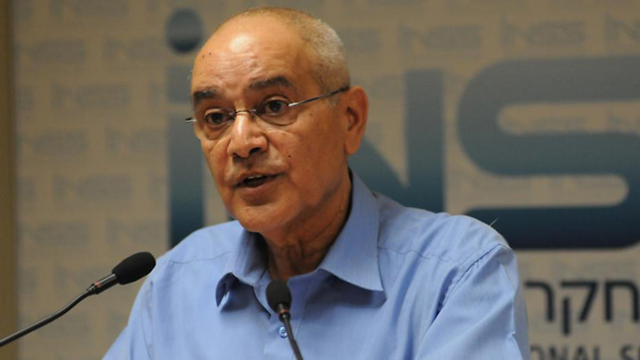
IDF analysts inspected the results the next day: Hundreds of rockets destroyed, along with 44 Iran-made Fajr types 3 and 5 rockets and Zilzal rocket launchers possessing medium-to-long ranges, which could have reached all the way to Israel's Sharon region and the outskirts of the Tel Aviv Metropolitan Area (Gush Dan). Hezbollah's strategic weapons were taken away less than an hour after IDF reservists Ehud Goldwasser and Eldad Regev were kidnapped by the Lebanese Shi'ite terror organization.
This concentrated strike on Hezbollah was based on years of contingency planning, which cost tens of millions of dollars. The Mossad was involved in preparations, which were classified even inside IDF ranks due to their sensitive nature.
The results astonished IDF officials, some of whom advised against the actions, fearing that they would result in 200-300 civilian deaths and damage Israel's legitimacy in fighting Hezbollah. In reality, about 20 civilians died in the strikes.
The strikes, codenamed Operation Specific Gravity, also had negative consequences for Israel. It created the feeling that the IAF could do most of the IDF's work in the war against Hezbollah. This line of thinking was not limited to Dan Halutz—still the only IDF chief of staff to ever come out of the Air Force—who opposed a ground offensive. Then-prime minister Ehud Olmert and defense minister Amir Peretz agreed with Halutz.
Overconfidence in the IAF's capabilities on its own comes up in nearly all background briefings done by IDF ground combat officers. "Only fighters on the ground, sent quickly to locate and dismantle Hezbollah's weapons caches, will bring about achievements and decisive wins," officials in the IDF Tank and Infantry Corps say.

Just like in training
"I hesitate to define it as a too-successful operation," said then-Valley Squadron commander and current Head of the IAF Air Division, Brig. Gen. Nir Barkan. "It was a successful operation, and if it hadn't been, then the war would have looked different, especially in its first few days—the blows we suffered would have been much tougher."
Not long after the initial reports about the incident in which Hezbollah abducted Goldwasser and Regev, four fighter jet formations from the Valley Squadron were launched, with Barkan piloting one of the planes. "We struck structure that we believed to have been used to abduct the soldiers," he recounted. "When I came back to base, I found the squadron in a totally difference state – a state of war. (They were) arming the planes with bombs and (fuel tanks). We realized that the war had begun."
During his years of preparing for Operation Specific Gravity, Barkan doubted it would ever take place. "After all, we had left Lebanon and there were almost no confrontations on the border," he said recently, "but that same afternoon I got an order to prepare for the operation, and at night dozens of fighter jets took off from the bases. The distance between planes was small. The execution itself wasn't difficult, and we acted skillfully and according to plan. After we landed back, people said it was exactly according to operative training."
A bomb every minute
Major Sagi, a reservist pilot in the Valley Squadron, was called up for the operation. "We divided Southern Lebanon to two areas – north and south. I was part of the first pair (of planes) to strike. We dropped a bomb every minute. I remember how we flew quietly. We took off at about 11pm, a plane armada, each on their own course. We dropped two one-ton bombs, and everything worked perfectly. In these operations, if there's a problem, the entire operation goes wrong, and you see it immediately. That didn’t happen. We quickly knew that the operation had succeeded."
Weeks later, there was disappointment in the high ranks of the IDF over the fact that Specific Gravity was not sufficiently publicized, as it could have been seen as a "big win" moment for Israel during the war—a morale booster for a nation that felt as if it had not won a decisive-enough victory against Hezbollah.
Lt. Col. A., an Air Force intelligence officer, was one of the people in charge of planning Specific Gravity. According to him, "The main dilemma then was the (potential) harm to non-involved people, which is why we recommended different strata of action, and the political leadership chose the maximal stratum. We could not simply call up planes back then and give them targets and mission updates, because of the lessons learned from previous wars. We operated according to a perception of a minimal amount of bombs for maximal effect."
Hezbollah's arms caches were dispersed between Southern Lebanon villages, some in open areas and others near or even inside residential buildings. This led to the Israeli decision to use "surgical" tools, which could hit targets with an accuracy radius of just a few meters.
Bombings later during the war were not always as successful as those of Operation Specific Gravity. "The element of surprise can be used to a limited extent," explained Brig. Gen. Barkan. "You can't keep surprising (the enemy) for 33 days. Were we to try that (flight operation) after two days or ten days, the level of success would not have been similar. These days, our intelligence capabilities are improved and our rate of attack capabilities is much higher. On the other hand, the other side also hasn't stayed put, which will require us to handle absorption (of attacks) and fighting under fire."
Despite the fairly quiet decade on Israel's northern front since that war, which has, over the years, mitigated the notion that it was a failed effort, Barkan advises Israelis not to jump to any conclusions about Hezbollah's level of deterrence. The long-term perspective, he says, is not achieved in ten years.

















